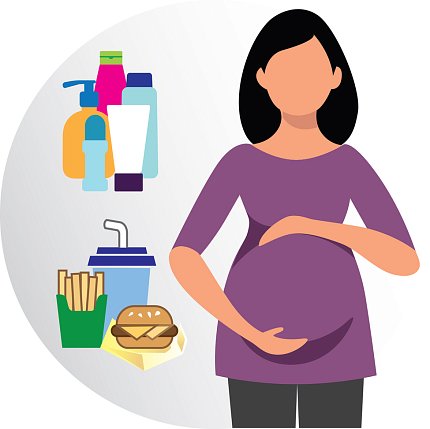Preterm Birth More Likely with Exposure to Phthalates

Photo: NIEHS
Pregnant women who were exposed to multiple phthalates during pregnancy had an increased risk of preterm birth, according to new research by NIH. Phthalates are chemicals used in personal care products, such as cosmetics, as well as in solvents, detergents and food packaging.
After analyzing data from more than 6,000 pregnant women in the U.S., researchers found that women with higher concentrations of several phthalate metabolites in their urine were more likely to deliver their babies preterm, which is delivering 3 or more weeks before a mother’s due date.
“Having a preterm birth can be dangerous for both baby and mom, so it is important to identify risk factors that could prevent it,” said Dr. Kelly Ferguson, an NIEHS epidemiologist and senior author on the study, published in JAMA Pediatrics.
In the study—the largest to date on this topic—Ferguson and her team pooled data from 16 studies conducted across the country that included individual participant data on prenatal urinary phthalate metabolites (representing exposure to phthalates) as well as the timing of delivery.
Researchers analyzed data from pregnant women who delivered between 1983-2018. Nine percent, or 539, of the women in the study delivered preterm. Phthalate metabolites were detected in more than 96 percent of urine samples.
Higher concentrations of most phthalate metabolites examined were associated with slightly higher odds of preterm birth. Exposure to 4 of the 11 phthalates found in the pregnant women was associated with a 14-16 percent greater probability of having a preterm birth. The most consistent findings were for exposure to a phthalate that is used commonly in personal care products like nail polish and cosmetics.
The researchers also used statistical models to simulate interventions that reduce phthalate exposures. They found that reducing the mixture of phthalate metabolite levels by 50 percent could prevent preterm births by 12 percent on average.
Interventions targeting behaviors, such as trying to select phthalate-free personal care products (if listed on label), voluntary actions from companies to reduce phthalates in their products or changes in standards and regulations could contribute to exposure reduction and protect pregnancies.
“It is difficult for people to completely eliminate exposure to these chemicals in everyday life, but our results show that even small reductions within a large population could have positive impacts on both mothers and their children,” said Dr. Barrett Welch, a postdoctoral fellow at NIEHS and first author on the study.
Eating fresh home-cooked food, avoiding processed food that comes in plastic containers or wrapping and selecting fragrance-free products or those labeled “phthalate-free,” are examples of things people can do that may reduce their exposures.
